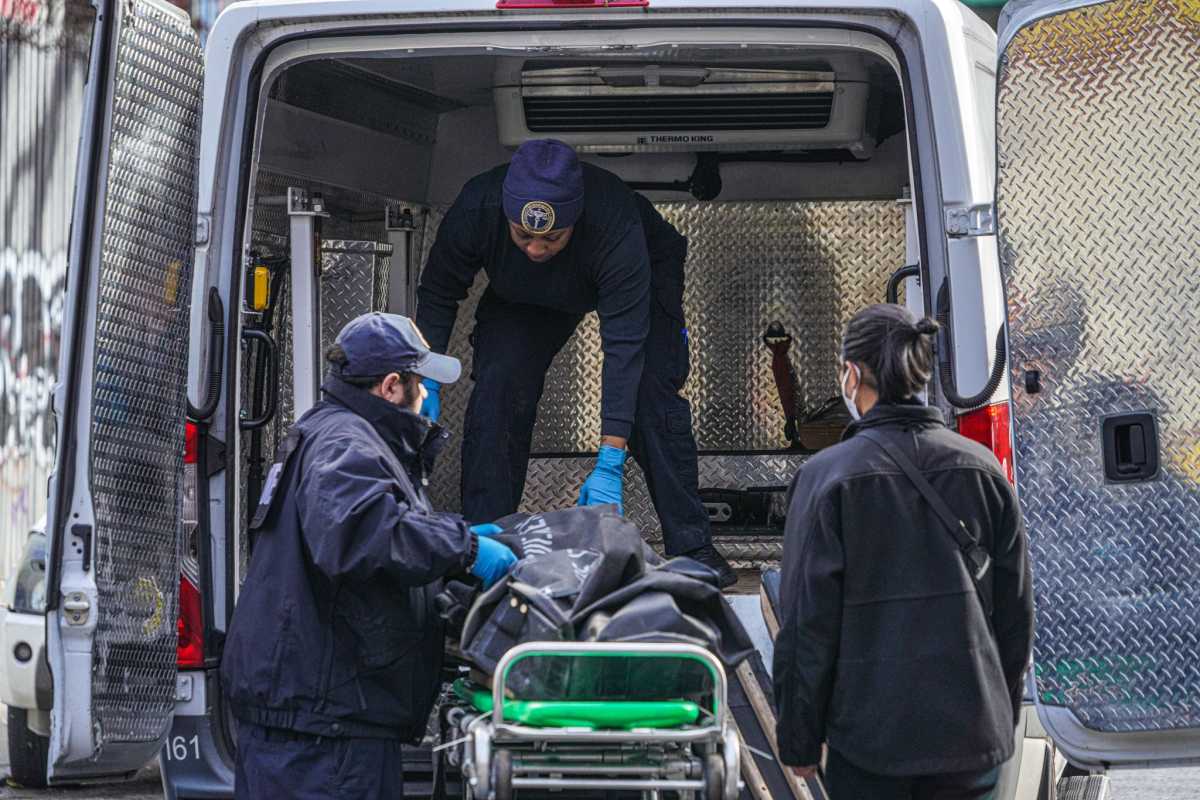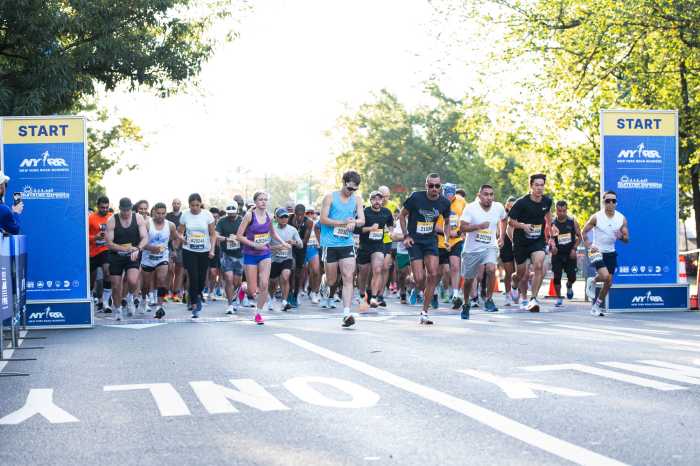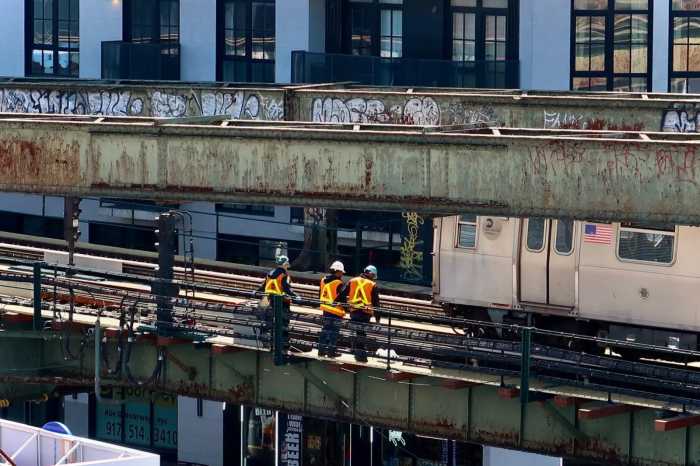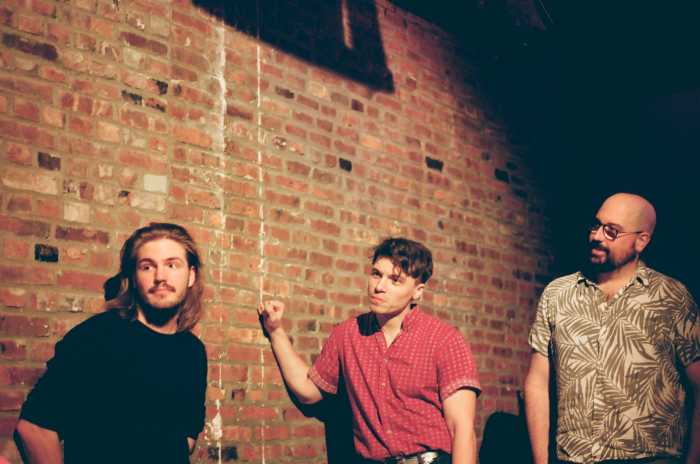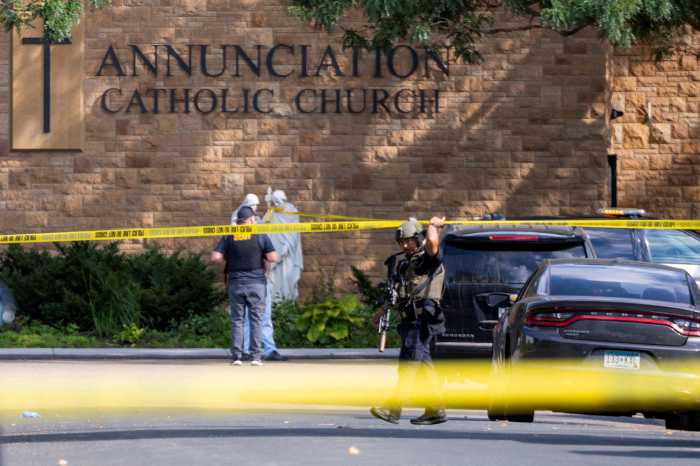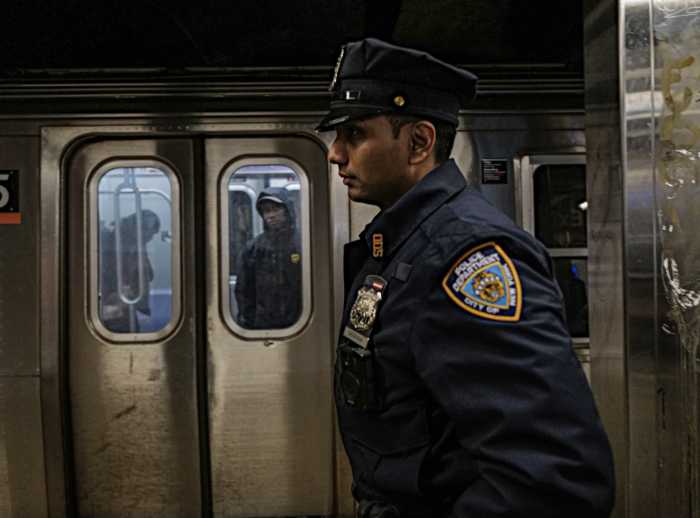Construction of the public recreational areas, often called green space,
in the Brooklyn Bridge Park plan will be delayed until investors for the
project’s private development sites have been secured, according
to the woman in charge of building the 1.3-mile waterfront oasis.
In a presentation to the media in December, Wendy Leventer, president
of the Brooklyn Bridge Park Development Corporation (BBPDC), estimated
that by September or October the public authority could issue requests
for proposals for the commercial aspects of the plan.
“We’ll see how developers respond,” she said, and noted
they didn’t want to shop the park around “too much” for
fear of devaluing the prime waterfront sites the BBPDC has promised for
the development of apartment buildings on the uplands of Pier 6 and just
north of the Manhattan Bridge.
“The bulk of the park first depends on which sites are responded
to,” Leventer said, noting that she anticipated the first sites up
for construction would be the 8-, 12- and 30-story residential buildings.
The redevelopment of the Civil War-era Empire Stores by Shaya Boymelgreen
as a Chelsea Market-style commercial complex would come next, she said,
and then a hotel, which will go on the uplands of Pier 1, at Old Fulton
Street, along with a restaurant out on the pier.
Leventer said she still expected a completion date for Brooklyn Bridge
Park of 2010, and anticipated the BBPDC would acquire title to the waterfront
property from the Port Authority of New York and New Jersey by September.
But some community members — especially those who are not happy that
housing has become the primary revenue generator for the self-sustaining
park — were not happy to hear the news.
“That’s just ass backwards,” said Barbara Brookhart, who
helped develop the conceptual plan of the park in its earlier phases throughout
the 1980s and ’90s. Brookhart, a Carroll Gardens resident, said the
new plans bear little resemblance to what the park’s founders had
in mind.
“I think you could start doing the project on an interim basis,”
she said. That step-by-step approach was part of the original Guiding
Principals that were adopted by park organizers in 1992, she said. The
state and city have committed a combined $150 million to build the park.
“So they’re threatening that unless we approve [the housing],
that they won’t build the park,” said Brookhart. “That’s
what they’re saying. Well, that’s wrong.”
But Marianna Koval, co-director of the Brooklyn Bridge Park Conservancy,
says evidence that green space will be built can already be seen.
“We’ve already had green space created,” said Koval, “we
have 15 acres north of the Brooklyn Bridge,” referring to space committed
to the park prior to the 2000 plan.
Defending the plans to hold off on the bulk development until the commercial
sites are in contract, she explained, “Wendy’s been given the
task by the governor and mayor [to create a self-sustaining park] so she
can’t begin to create green space until she’s got the money
to create it.”
Koval pointed to a 2002 ceremony during which Gov. George Pataki and Mayor
Michael Bloomberg met at the site of the Main Street park in DUMBO to
announce the creation of the BBPDC and allocation of in state and city
funds to build the 80-acre commercial and recreational development.
“Nobody wants to sit a hotel on Pier 1 if they are going to sit next
to ruined pier sheds,” said Koval.
But Brooklyn Heights-DUMBO Councilman David Yassky pointed out that it
was precisely because of the funding committed by the city and state to
build the park that the planners had no excuse for waiting.
“I will be very disappointed if that is their decision,” he
said of the BBPDC’s plans to hold off on building the green space.
“It’s been more than two years since Governor Pataki and Mayor
Bloomberg came out to the Brooklyn waterfront and promised this park.
To delay it any further borders on forcing them to break that promise.”
Yassky added that the BBPDC’s decision to take on the costs of capital
maintenance — which would occur every 10 to 20 years — was entirely
of their own volition, noting that such maintenance is typically paid
for with government funds.
“That goes beyond the definition of self-sustaining; that adds costs
to the project that I think doesn’t need to be there,” the councilman
said.
“They need to do two things. The community needs to be assured that
there won’t be a bait-and-switch — that the commercial development
comes but the park is never built — and make sure that a significant
amount of park acreage is built, so the community won’t end up having
all the cost [of commercial development] and none of the benefit,”
Yassky said.
Vinegar Hill Association President and Conservancy board member Nicholas
Evans Cato said that wouldn’t be hard.
“I think most people who use this park would just prefer to have
cheap, flat grass — and more of it — rather than giving up that
space to finance condos that would finance exclusive amenities.”


